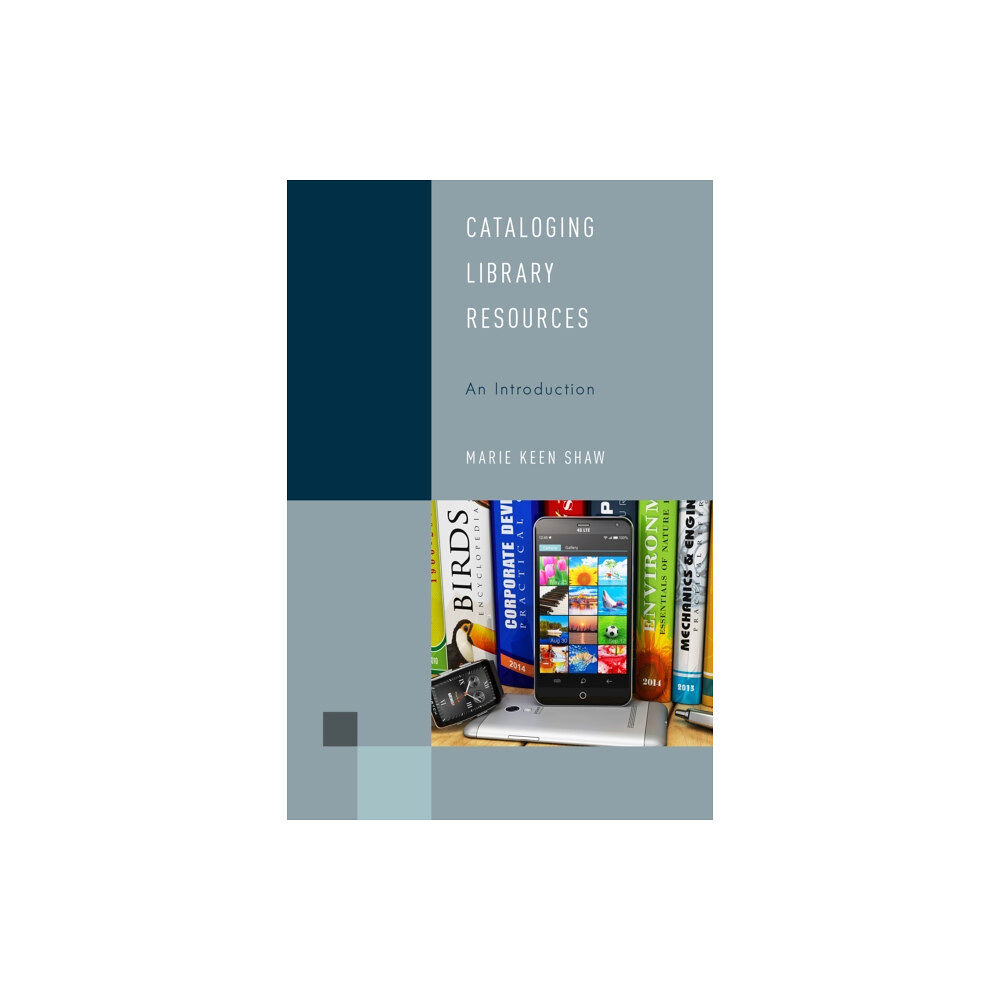- Hem
- Böcker
- Kurslitteratur
- Övrigt inom kurslitteratur
- Cataloging Library Resources (häftad, eng)

Cataloging Library Resources (häftad, eng)
While there are many cataloging texts, very few are written specifically for library support staff. This is the one and only book purposeful...
599 kr
Bara 2 kvar
Skickas inom 4 - 5 vardagar
- Fri frakt
Just nu: Fri frakt på alla köp
Snabb leverans
Alltid låga priser
Produktbeskrivning
While there are many cataloging texts, very few are written specifically for library support staff. This is the one and only book purposefully aligned with the new American Library Association – Library Support Staff Certification (LSSC) competency standards for Cataloging and Classification.
Written in clear language by someone who teaches cataloging in a library support staff program and featuring practical examples, Cataloging Library Resources: An Introduction will help library support staff become effective catalogers. Other books on this topic are written for professional librarians rather than support staff.
And although 85% of library support staff do not hold professional degrees, many are expected to do the complex and technical work of catalogers. This book provides many examples that support staff can use to learn how to catalog all types of library print, media, and digital materials using the most up-to-date Library of Congress standards.
Using this handbook as a guide, readers will be able to perform the ALA-LSSC cataloging and classification competencies and the new RDA, FRBR, and BIBFRAME standards listed below:• Apply and manage the appropriate processes, computer technology, and equipment for cataloging and classification.• Apply principles of Resource Description and Access (RDA) and the Functional Requirements for Bibliographic Records (FRBR) when creating cataloging records.• Apply principles of the Bibliographic Framework Initiative (BIBFRAME) and utilize the BIBFRAME model to create cataloging records.• Use the basic cataloging and classification tools, both print and online, including bibliographic utilities and format standards.• Understand the value of authority control and its basic principles, and can identify and apply appropriate access points for personal names, corporate bodies, series, and subjects.• Explain the value and advantages of cooperative or collaborative cataloging practices to enhance services.• Know the basics of standard metadata formats and cataloging rules to select, review, and edit catalog records, and to generate metadata in various formats.• And more!
Written in clear language by someone who teaches cataloging in a library support staff program and featuring practical examples, Cataloging Library Resources: An Introduction will help library support staff become effective catalogers. Other books on this topic are written for professional librarians rather than support staff.
And although 85% of library support staff do not hold professional degrees, many are expected to do the complex and technical work of catalogers. This book provides many examples that support staff can use to learn how to catalog all types of library print, media, and digital materials using the most up-to-date Library of Congress standards.
Using this handbook as a guide, readers will be able to perform the ALA-LSSC cataloging and classification competencies and the new RDA, FRBR, and BIBFRAME standards listed below:• Apply and manage the appropriate processes, computer technology, and equipment for cataloging and classification.• Apply principles of Resource Description and Access (RDA) and the Functional Requirements for Bibliographic Records (FRBR) when creating cataloging records.• Apply principles of the Bibliographic Framework Initiative (BIBFRAME) and utilize the BIBFRAME model to create cataloging records.• Use the basic cataloging and classification tools, both print and online, including bibliographic utilities and format standards.• Understand the value of authority control and its basic principles, and can identify and apply appropriate access points for personal names, corporate bodies, series, and subjects.• Explain the value and advantages of cooperative or collaborative cataloging practices to enhance services.• Know the basics of standard metadata formats and cataloging rules to select, review, and edit catalog records, and to generate metadata in various formats.• And more!
| Format | Häftad |
| Omfång | 262 sidor |
| Språk | Engelska |
| Förlag | Rowman & Littlefield |
| Utgivningsdatum | 2017-01-26 |
| ISBN | 9781442274860 |
Specifikation
Böcker
- Format Häftad
- Antal sidor 262
- Språk Engelska
- Utgivningsdatum 2017-01-26
- ISBN 9781442274860
- Förlag Rowman & littlefield
Leverans
Vi erbjuder flera smidiga leveransalternativ beroende på ditt postnummer, såsom Budbee Box, Early Bird, Instabox och DB Schenker. Vid köp över 399 kr är leveransen kostnadsfri, annars tillkommer en fraktavgift från 39 kr. Välj det alternativ som passar dig bäst för en bekväm leverans.
Betalning
Du kan betala tryggt och enkelt via Avarda med flera alternativ: Swish för snabb betalning, kortbetalning med VISA eller MasterCard, faktura med 30 dagars betalningstid, eller konto för flexibel delbetalning.
Specifikation
Böcker
- Format Häftad
- Antal sidor 262
- Språk Engelska
- Utgivningsdatum 2017-01-26
- ISBN 9781442274860
- Förlag Rowman & littlefield
